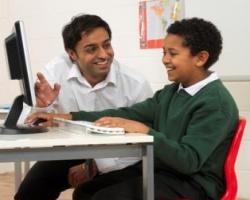Nearly one in 10 pupils at the Sunderland secondary school where Amer Sheikh works are from black and minority ethnic (BME) backgrounds, and yet he is the only black teacher out of 100: “I’m constantly aware of my ethnicity. For the black students, I feel I need to be a role model and for the white students, I feel I need to do my bit in helping them cope in a diverse society.”
As a male primary school teacher in London, Edward Bradley also feels the strain of being a minority: “I’m quite lucky at my current school because there are three other male teachers, but that’s unusual. At a previous school, I was the only male teacher. For some children, a male teacher is their only male role model, so I would definitely like there to be more of us. It’s all part of the hidden curriculum – the implicit stuff the children pick up, like seeing men as people who can be in caring jobs.”
Diversity among teaching staff is a big problem. Men make up just 16 per cent of primary school teachers, and this year, 2,341 men entered primary teacher training, compared to 13,656 females. Meanwhile, the number of new entrants into both primary and secondary teaching from a BME background is down 12 per cent in the last year alone – from 4,293 to 3,753.
Bradley believes teaching simply isn’t on the radar for many males in terms of careers; others think men who want to work with young children may feel uneasy about how they’ll be perceived.




